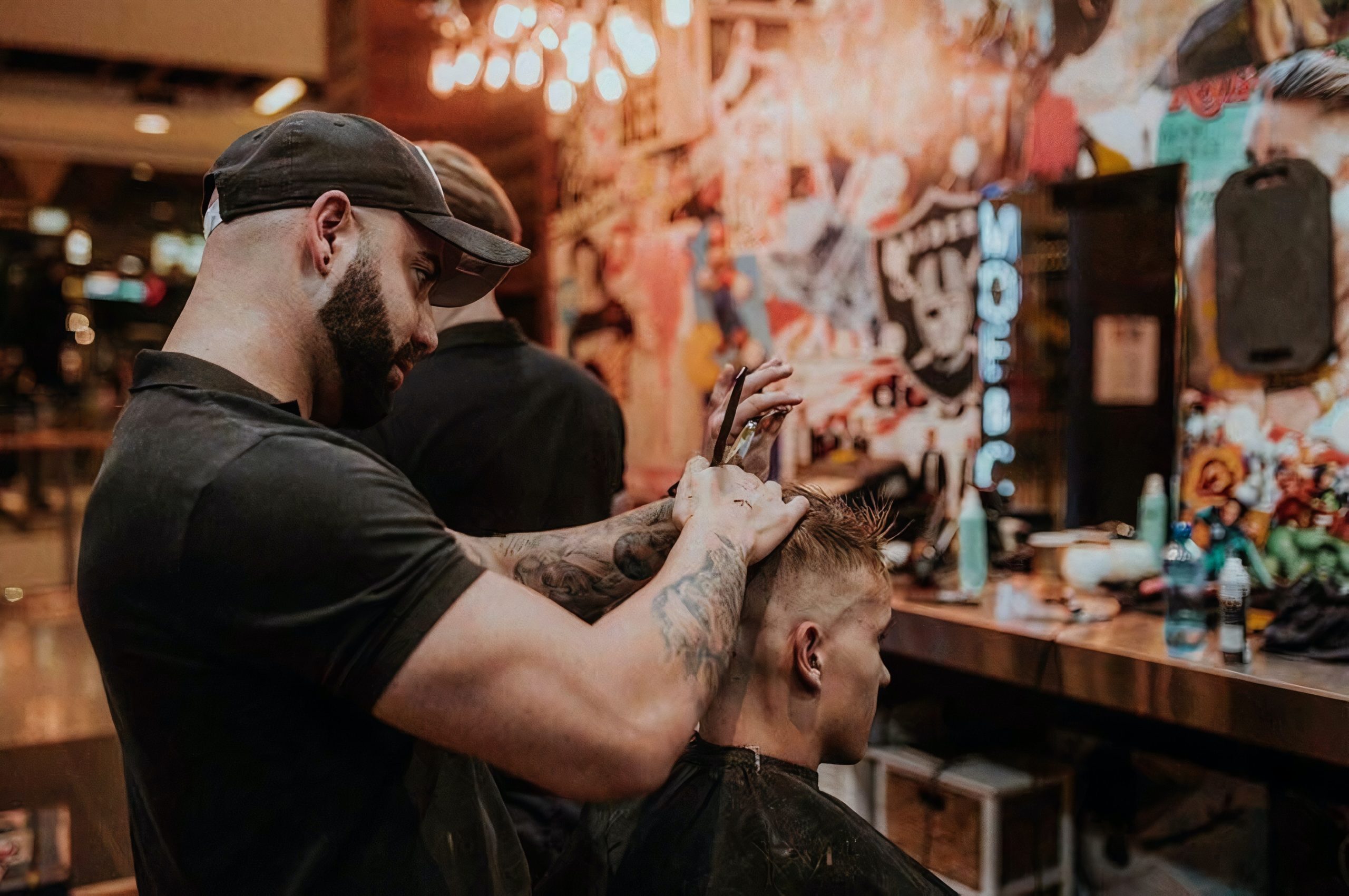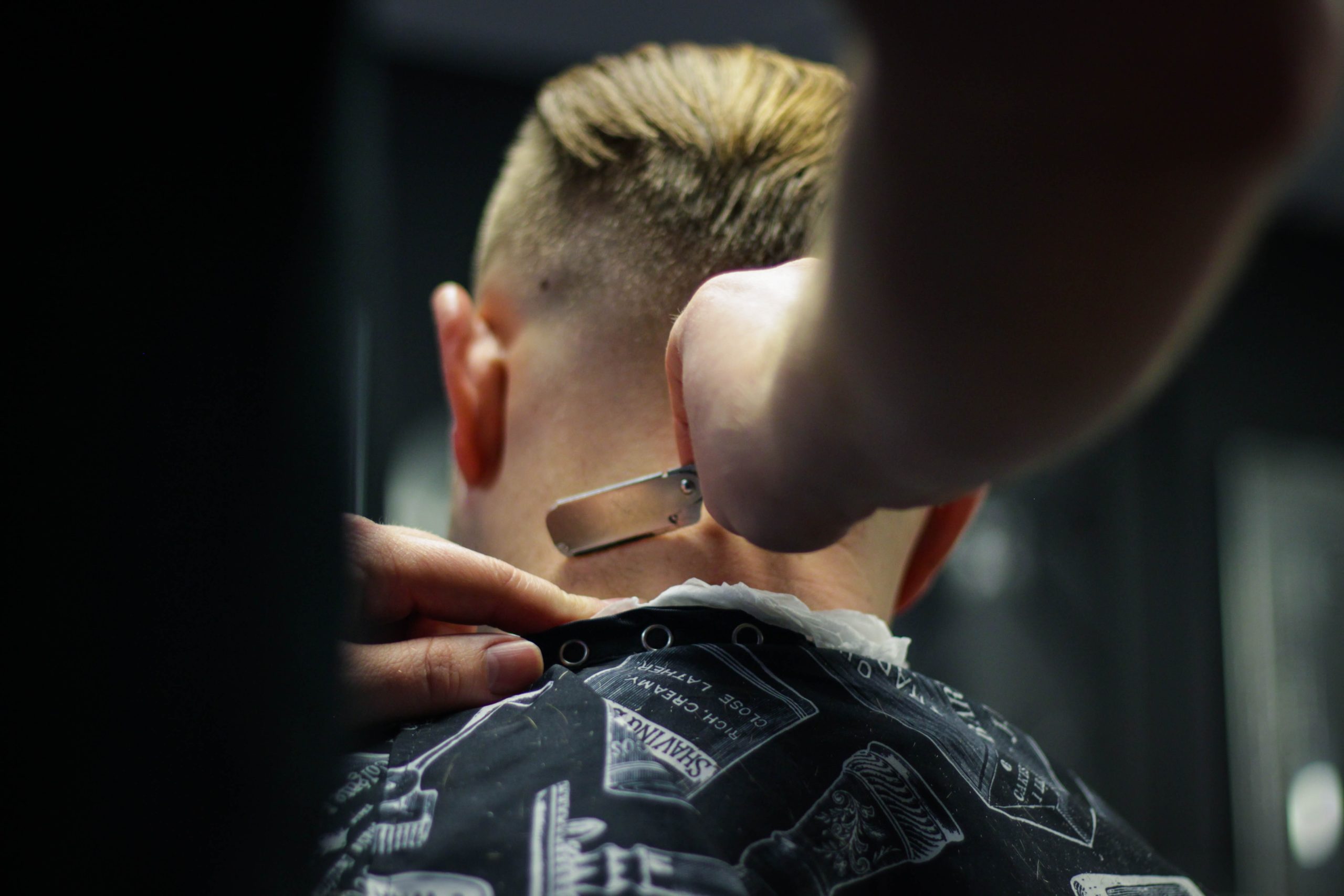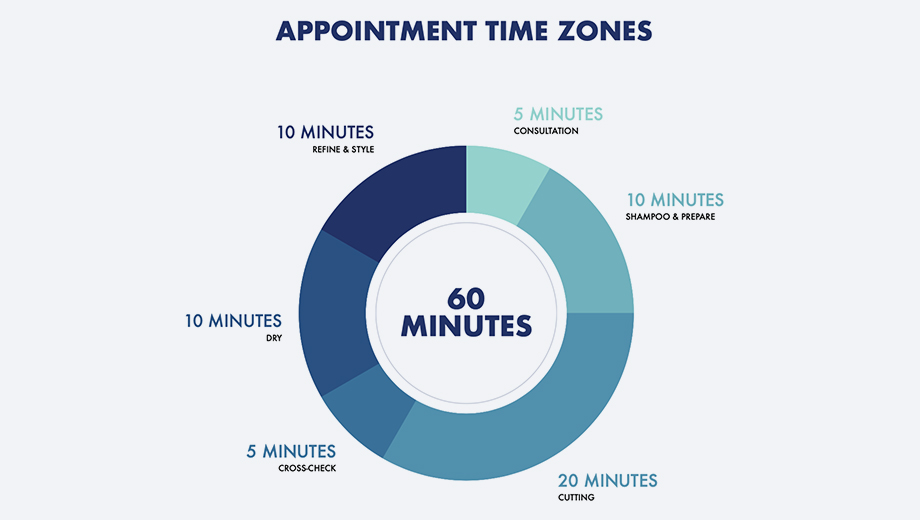Are you new to the barbering world? If so, there is a lot for you to learn! On top of perfecting your craft, you also need to get to grips with technical barbering vocabulary. To help you get started, we’ve compiled a list of 10 essential barber terms for beginners that we think you need to learn to start working with confidence.
10 Essential barber terms for barbering
Learning the specific terminology of your work leads you to have a deeper understanding of what you are doing at any given moment, it will help you to understand your clients’s explanations when they ask for a specific cut or when they need to understand your orientations. Here we go!
- Fade: it is a hairstyle that is shorter at the sides and back and gradually lengthens at the top. There are many different types of fades, such as low fades, high fades, medium fades and skin fades.
- Low cut: it is a hairstyle where the hair on top is left long, while the sides and back are shaved short. Undercuts are often combined with bleaching for a more dramatic look.
- Textured Cut: This involves cutting shorter lengths into longer lengths to create an internal shape that functions as a structure for each style.
- Classic pompadour: The pompadour is a hairstyle that is well-known because of having a large volume of hair that is concentrated on the forehead, as if it were a high fringe, which carries the ends backwards and ends in a soft wave.
- Razor cut: These are shortcuts that are then cut with a razor to reduce the volume of the nape of the neck.
- Gradient: Play with the length of each strand to make some shorter than others to give movement and the impression of natural volume.
- Thinning: This consists of thinning the hair in certain places with a pair of texturising scissors or a clippers to make your hairstyle lighter.
- The Undercut: This cut brings a subtler version, a cut that leaves the top locks of the skull longer, and the sides and back of the neck shorter.
- Tapered haircut: This is a short haircut that encircles the crown of the head. The haircut extends from the crown towards the neckline.
- Mid-length haircuts: Haircuts that skim the shoulder area but do not go beyond it.
Online training about primary barbering skills you need to learn
If you want to go deeper into the technical vocabulary of barbering and understand what you start doing day in and day out, this Online Course in Primary Skills is the key.
Learn the basic fundamental knowledge and language of cutting hair to give you a deeper understanding of what you are doing.
Key lesson take aways
- Understand shapes.
- Learn the core techniques.
- The usage of Sections.
- What the results of cutting actually are.
- Be clearer and confident on WHAT, HOW and WHY your doing what your doing.
Do you want to access this free barbershop lesson? click here.
This way, you will avoid misunderstandings with your clients or when you are confronted for the first time with the needs that arise. When you understand the technical and basic language of the profession, it will be easier for you to decide which technique to use.
Each technique carries with itself a particular vocabulary and if you want to learn cutting techniques to expand your hairdressing language and knowledge, take advantage of online tutorials that help you learn at your own pace.
So if you want to learn more, this link will give you access to more tutorials that will increase your knowledge.





